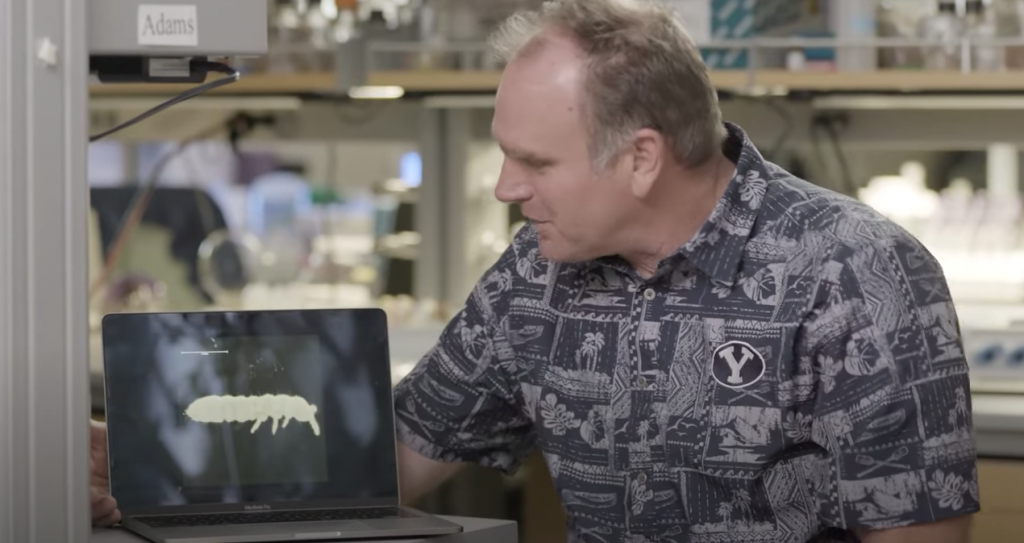
A YouTube video produced by BYU University Communications highlights a primitive insect-like creature that has survived 30 ice ages and was recently rediscovered in Antarctica by a team of scientists who had been searching for it for decades. “This is what we affectionately refer to as the ghost collembola,” says BYU biology professor Byron Adams, who conducts regular research in Antarctica. “And we call it the ghost collembola because it’s white, like a ghost, but because we had not found it after looking for it for years and years and years, we started to wonder if it was even real, if it really existed.” In a paper published August 24, 2020, in the Proceedings of the National Academy of Sciences, Adams, Diana Wall and colleagues from eight different research institutions produce genetic data from the microscopic critters that corroborate climate reconstructions and estimates of past warm periods of reduced ice and absent ice shelf in the Ross Sea region of Antarctica.
“Genetic diversity of soil invertebrates corroborates timing estimates for past collapses of the West Antarctic Ice Sheet” was published in the Research published in the Proceedings of the National Academy of Sciences (PNAS) August 24, 2020. This research project was supported by the National Science Foundation (OPP projects 1341736 and 1637708).